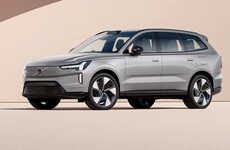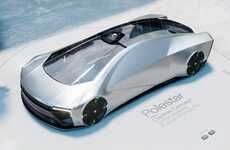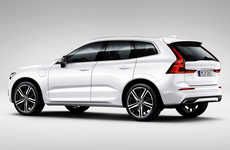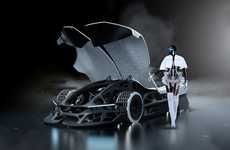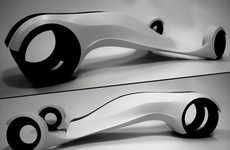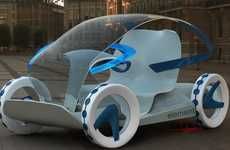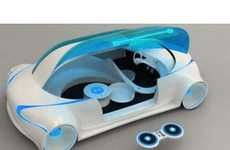
The Volvo 'Tomorrow Car' Will Have a Charged Exoskeleton
Amelia Roblin — September 30, 2010 — Autos
References: green.autoblog
The Imperial College of London has initiated a three-year collaborative project to develop the Volvo 'Tomorrow Car' which will bear its battery as protective paneling. With the aim to manufacture such a vehicle with the appearance of a regular Volvo, the project is a revolutionary rung on the ascension to more energy-efficient automobiles.
Made of carbon fibers and polymer resin, the Volvo 'Tomorrow Car' armor is pliable but durable, making it easy to mold into a hood and doors. This light cladding will charge and store energy much more efficiently than conventional car batteries.
Made of carbon fibers and polymer resin, the Volvo 'Tomorrow Car' armor is pliable but durable, making it easy to mold into a hood and doors. This light cladding will charge and store energy much more efficiently than conventional car batteries.
Trend Themes
1. Battery-powered Vehicles - Developing vehicles with battery-cladding presents an opportunity to revolutionize the automotive industry and create more energy-efficient solutions.
2. Advanced Materials - Creating new materials, such as carbon fibers and polymer resin, can lead to durable and efficient solutions not only in the automotive industry but also in other industries.
3. Energy Efficiency - Utilizing battery-cladding can be an innovative way to reduce energy consumption and promote sustainability in various sectors.
Industry Implications
1. Automotive - The automotive industry should explore the potential of battery-cladding to create more energy-efficient and sustainable vehicles.
2. Renewable Energy - The renewable energy industry can benefit from the development of efficient and durable battery-cladding for various applications.
3. Consumer Electronics - The consumer electronics industry could incorporate battery-cladding into their products, creating more efficient and eco-friendly devices.
0.8
Score
Popularity
Activity
Freshness


